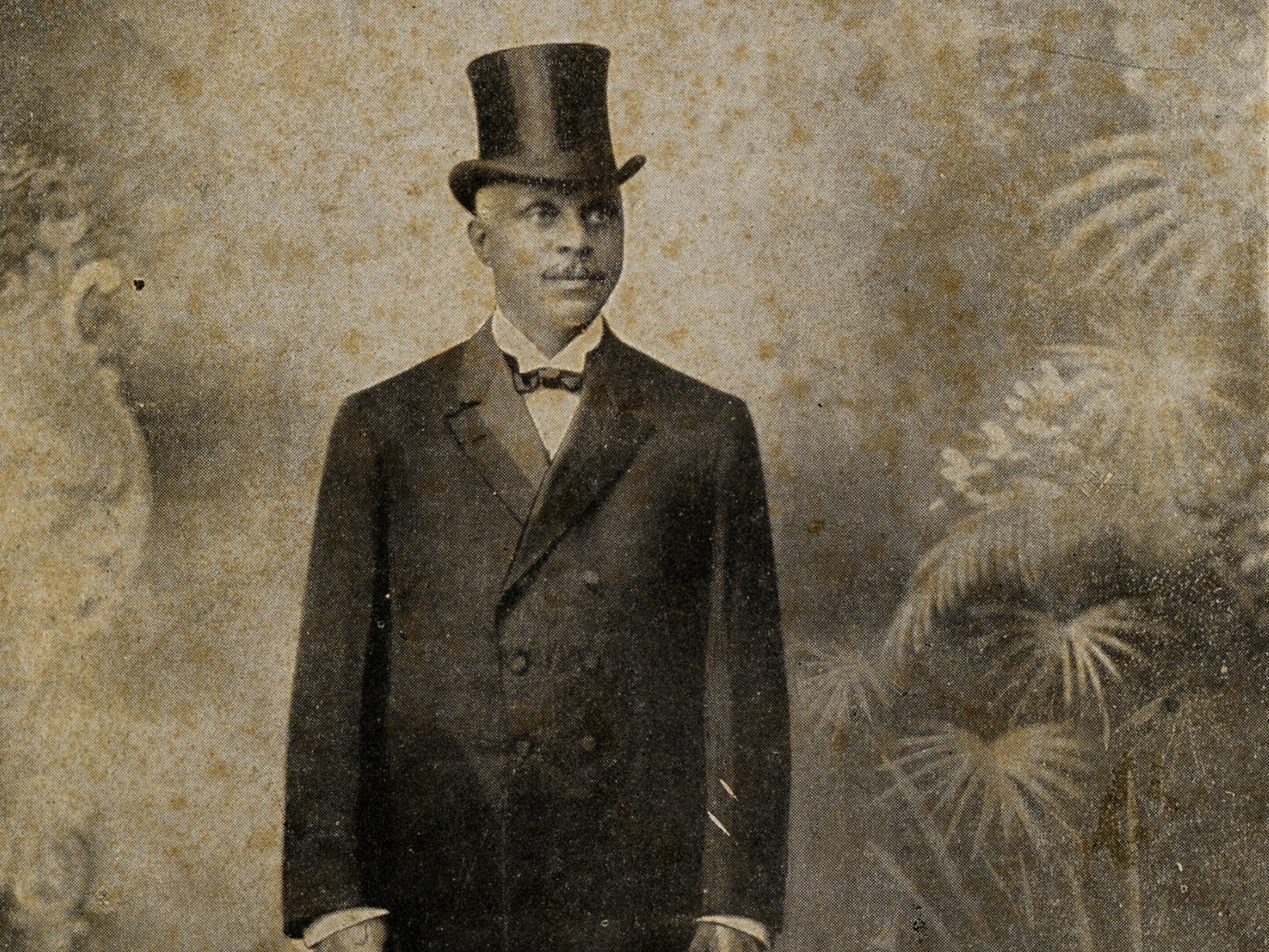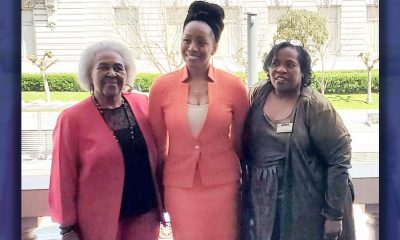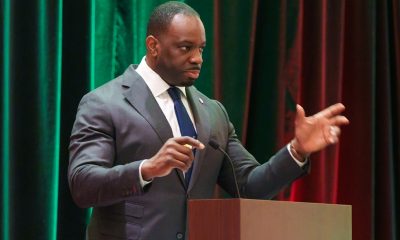Black History
George Edwin Taylor: Black Politician an Early Candidate for U.S. Presidency
Throughout America’s history, the majority of its political force has been white. But African Americans had often been involved in supporting roles such as advisors, legislators, commentators, and voters.

Throughout America’s history, the majority of its political force has been white. But African Americans had often been involved in supporting roles such as advisors, legislators, commentators, and voters.
It was early politicians such as George Edwin Taylor (1857–1925) who helped pave the long road to Barack Obama’s historic White House run. Born in the pre-Civil War South, Taylor would become the first African American selected by a political party to be its candidate for the presidency of the United States.
Taylor was born in Little Rock, Ark. He lost his mother at a young age and subsequently had to fend for himself. In 1865, he arrived in Wisconsin, where he was taken in by a Black family who lived near the town of La Crosse. They were politically active and supported Taylor’s education. He attended Wayland University in Beaver Dam (1877–1879).
After college, Taylor took a job at the La Crosse Free Press and later at the La Crosse Evening Star. He also produced newspaper columns for local papers and wrote articles for the Chicago Inter Ocean. These experiences led him into politics.
Taylor was specifically drawn to issues surrounding labor. He helped with the campaign to re-elect La Crosse’s pro-labor mayor and became a leader and office holder in Wisconsin’s statewide Union Labor Party. By then he’d started his own paper, the Wisconsin Labor Advocate, which became one of the newspapers of the party.
By 1887, Taylor had become a member of the Wisconsin delegation to the first national convention of the Union Labor Party. He then made national political issues the focus of his newspaper. As he became well known, race became an issue. His paper ceased publication around 1887 or 1888.
Three years later he relocated to Iowa where his political interests increased. He was first drawn to the Republican Party, then to the Democrats. Taylor started the newspaper Negro Solicitor and became president of the National Colored Men’s Protective Association and the National Negro Democratic League. He aligned himself with the Populist faction that attempted to reform the Democratic Party.
In 1904, he joined the first national political party created exclusively for and by Blacks: the National Liberty Party. That year, during the party’s national convention, its executive committee asked Taylor to be the party’s candidate for U.S. president.
Little attention was given to Taylor’s campaign despite the party’s platform having a national agenda. The Sun (1904) reported that Taylor “knew whites thought his candidacy was a joke,” but he believed that an independent political party that could mobilize the African-American vote was the “only practical way Blacks could exercise political influence.”
The 1904 campaign was Taylor’s last attempt to run for political office.
Taylor remained in Iowa until 1910. He then relocated to Jacksonville, Fla., where he edited several newspapers and served as director of the African American branch of the local YMCA.
He died in Jacksonville in 1925 at the age of 68.
Activism
Oakland Post: Week of April 24 – 30, 2024
The printed Weekly Edition of the Oakland Post: Week of April 24 – 30, 2024

To enlarge your view of this issue, use the slider, magnifying glass icon or full page icon in the lower right corner of the browser window. ![]()
Activism
Oakland Post: Week of April 17 – 23, 2024
The printed Weekly Edition of the Oakland Post: Week of April 17 – 23, 2024

To enlarge your view of this issue, use the slider, magnifying glass icon or full page icon in the lower right corner of the browser window. ![]()
Black History
Matthew Henson: Explorer Extraordinaire
Matthew Henson, a trailblazing explorer who overcame countless obstacles to leave an incredible mark on history. Born on August 8, 1866, in Charles County, Maryland, his journey is a testament to the power of determination and the spirit of adventure.

By Tamara Shiloh
Matthew Henson, a trailblazing explorer who overcame countless obstacles to leave an incredible mark on history. Born on August 8, 1866, in Charles County, Maryland, his journey is a testament to the power of determination and the spirit of adventure.
Henson’s life began amidst the backdrop of post-Civil War America, where opportunities for African Americans were scarce. From a young age, he possessed an insatiable curiosity about the world beyond his small town. At the age of 12, he embarked on a journey that would change the course of his life forever when he joined a merchant ship as a cabin boy.
His most famous expedition was his journey to the Arctic with renowned explorer Robert E. Peary. In 1887, Henson joined Peary’s crew as a seaman and quickly proved himself to be invaluable with his skills as a navigator and craftsman. Over the course of several expeditions, Matthew endured extreme cold, treacherous terrain, and grueling conditions as he and Peary sought to reach the elusive North Pole.
In 1908–09, Peary set out on his eighth attempt to reach the North Pole. It was a big expedition, with Peary planning to leave supplies along the way. When he and Henson boarded their ship, the Roosevelt, leaving Greenland on August 18, 1909, they were joined by a large group. This included 22 Inuit men, 17 Inuit women, 10 children, 246 dogs, 70 tons of whale meat, blubber from 50 walruses, hunting gear, and tons of coal.
In February, Henson and Peary left their anchored ship at Ellesmere Island’s Cape Sheridan, along with the Inuit men and 130 dogs. They worked together to set up a trail and supplies along the way to the Pole.
Peary picked Henson and four Inuit people to join him in the final push to the Pole. However, before they reached their destination, Peary couldn’t walk anymore and had to ride in a dog sled. He sent Henson ahead to scout the way. In a later interview with a newspaper, Henson recalled being in the lead and realizing they had gone too far. The group turned back, and Henson noticed his footprints helped guide them to their destination. At that location, Henson planted the American flag.
Henson’s legacy extends far beyond his expeditions to the Arctic. He shattered racial barriers in the world of exploration and inspired countless individuals, regardless of race, to dream big and pursue their passions. In 1937, he was finally recognized for his achievements when he was inducted into The Explorers Club, an organization dedicated to promoting scientific exploration and field research.
Matthew Henson died in the Bronx, New York, on March 9, 1955, at the age of 88.
-

 Activism4 weeks ago
Activism4 weeks agoOakland Post: Week of March 27 – April 2, 2024
-

 #NNPA BlackPress4 weeks ago
#NNPA BlackPress4 weeks agoBeloved Actor and Activist Louis Cameron Gossett Jr. Dies at 87
-

 Community1 week ago
Community1 week agoFinancial Assistance Bill for Descendants of Enslaved Persons to Help Them Purchase, Own, or Maintain a Home
-

 Activism3 weeks ago
Activism3 weeks agoOakland Post: Week of April 3 – 6, 2024
-

 Business1 week ago
Business1 week agoV.P. Kamala Harris: Americans With Criminal Records Will Soon Be Eligible for SBA Loans
-

 Activism2 weeks ago
Activism2 weeks agoOakland Post: Week of April 10 – 16, 2024
-

 Community1 week ago
Community1 week agoAG Bonta Says Oakland School Leaders Should Comply with State Laws to Avoid ‘Disparate Harm’ When Closing or Merging Schools
-

 Community6 days ago
Community6 days agoOakland WNBA Player to be Inducted Into Hall of Fame






















































